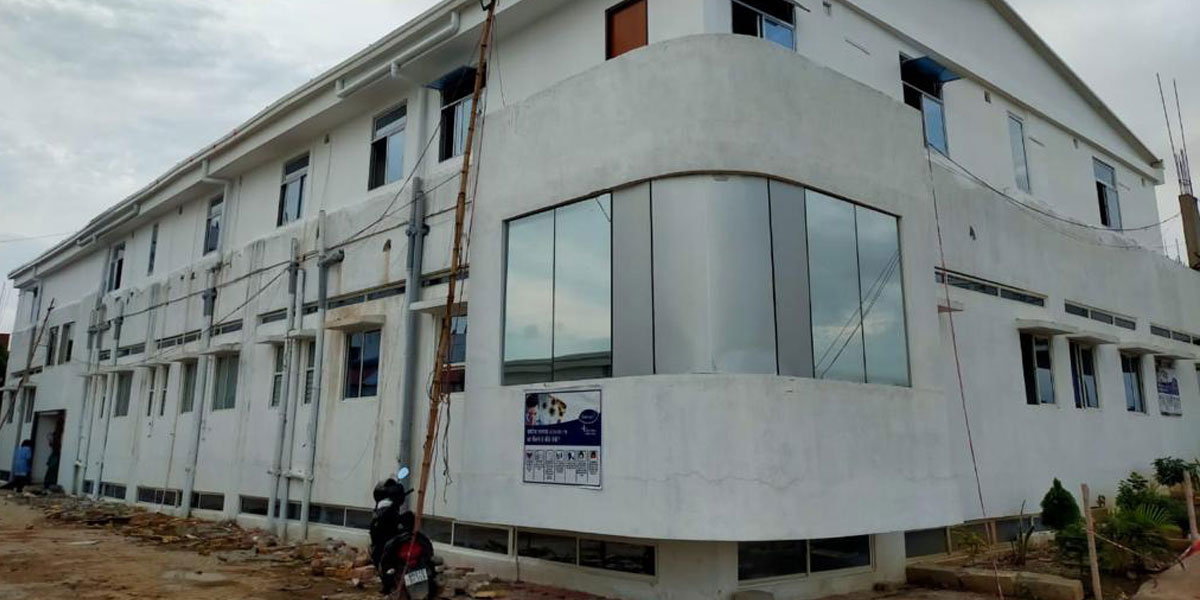

The construction industry accounts for 39 per cent of energy and process-related CO2 emissions. This quantifies to 14.16 billion tonne, which is so astounding that stakeholders have begun to take heed. There is an increasing demand for an eco-conscious approach and while organisations are choosing to build their projects to be environment-friendly, several existing brands and startups have been extending their support to India’s green building movement.
One such entrant is the Delhi-based startup Strawcture Eco. A civil engineer by education, Shriti Pandey, Founder, on her year-long residency fellowship in Pandhurna, Madhya Pradesh, witnessed stubble burning by the local farmers for two seasons – one season for straw after wheat harvesting and the second season for soybean stalk. Seeing this as an irritant that adversely impacts the environment, she set out on a journey to look for opportunities that would help convert this waste generated into an alternative resource.
The resulting product, known as AgriBioPanel, has been on the market commercially for the past two years. “We offer our customers a product that is 100 per cent carbon-negative and an alternative for interior applications such as walls, ceilings and doors, furniture and acoustics instead of the traditionally used brick, wood, engineered wood, plasterboards and fibre cement boards,” she shares. These boards have minimal VOC (volatile organic compounds) emission and formaldehyde presence. Additionally, compared to synthetic products, they offer a better u-value, acoustics of up to 40 dB, low thermal insulation value of 0.02, two-hour fire rating and a high breaking load capacity, i.e., they can take three times the impact load compared to traditional drywall construction.
The product in currently manufactured in Maharashtra and Uttar Pradesh, with a stock point in Delhi. While the current capacity is 30,000 sq ft per day of production, the company is manufacturing around 30 per cent in one shift. “We are looking to get to 50 per cent by the end of next year,” shares Pandey. “Our raw material does not travel more than 25 km from the source. However, while selling in South India, our product is presently travelling a lot more, unnecessarily offsetting the CO2 storing.” Hence, plans are in the pipeline to set up a factory in Mysore as well.
“We have covered over 12 states with sellers in the Northeast in Nagaland and Manipur as well,” she informs. “Any architect or builder pan-India can use our product, which gets specified as per different geographies.” She observes that architects are more approachable when it comes to accepting innovation, especially products that meet their design and aesthetic needs. Builders and contractors only need to be convinced about the pricing.
“In the past two years, we have sold over 1 million sq ft of this product for a revenue of more than Rs. 40 million. We plan to go three times the sale in last three years within this fiscal year,” says Pandey. In the next three years, she is looking forward to crossing the Rs. 1 billion mark while simultaneously becoming the go-to brand for green building materials in the country. The next step is also transitioning from E1 to E0. “Currently, 4 per cent of our product is chemical even though it is not formaldehyde. With R&D, we aim to have a product range that is completely biodegradable.”
Villigro and Social Alpha would help us expand into the international market.” What’s more, the company has recently procured certifications in compliance with European Standards, in addition to Indian standard testing, with a vision to expand its footprint to the Netherlands, Germany and the Middle East this year. “We have most of our certifications done, including GRIHA certification, LCA analysis and EPD (Environment Protection Declaration) certification, which is something not many building materials have,” she says. “We are also looking to get our product LEED-verified and IGBC-certified.”
The company is looking at warehouse applications for flooring and racking, and fire-rated doors for both commercial and multi-storied residential buildings. Its upcoming launch of a 100 per cent organic fiber baer product range for felt and acoustic panels will absorb VoC emission, instead of emitting.